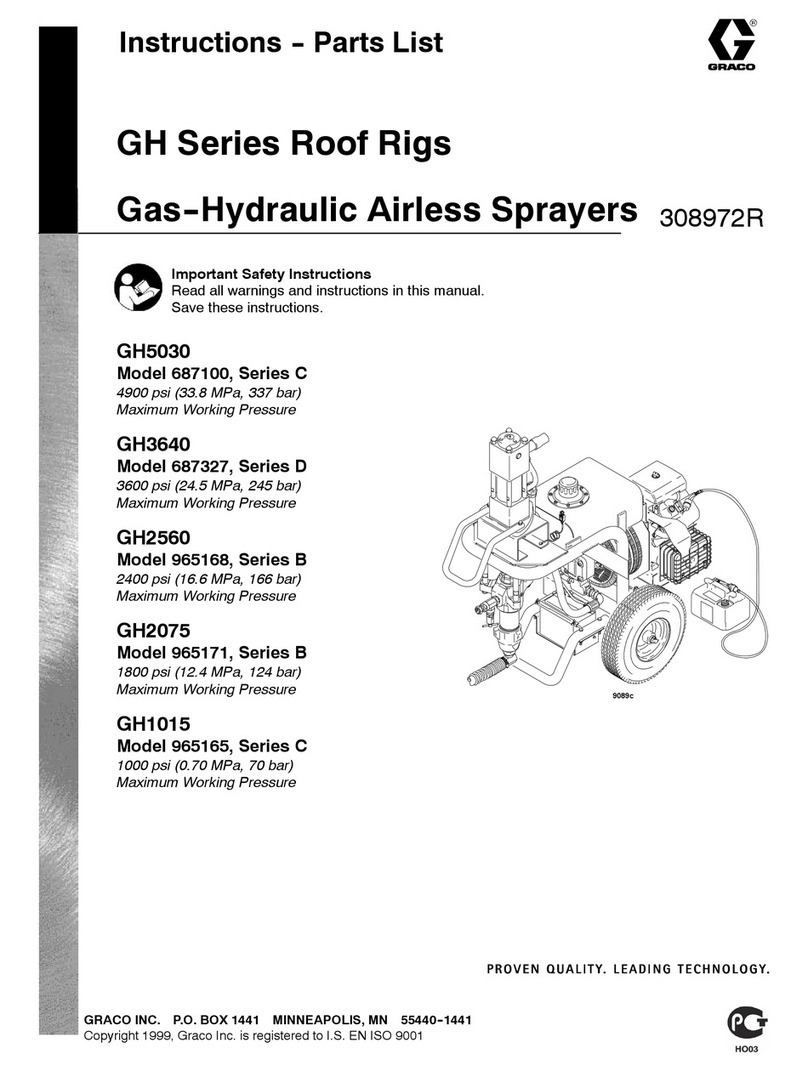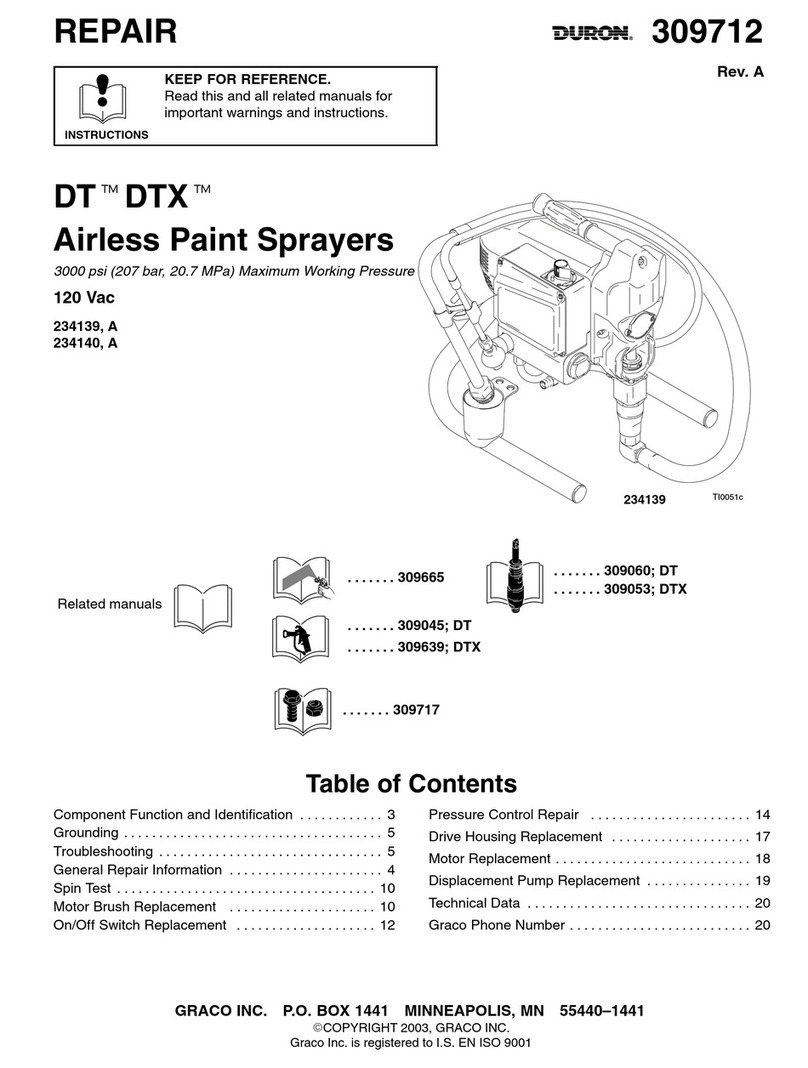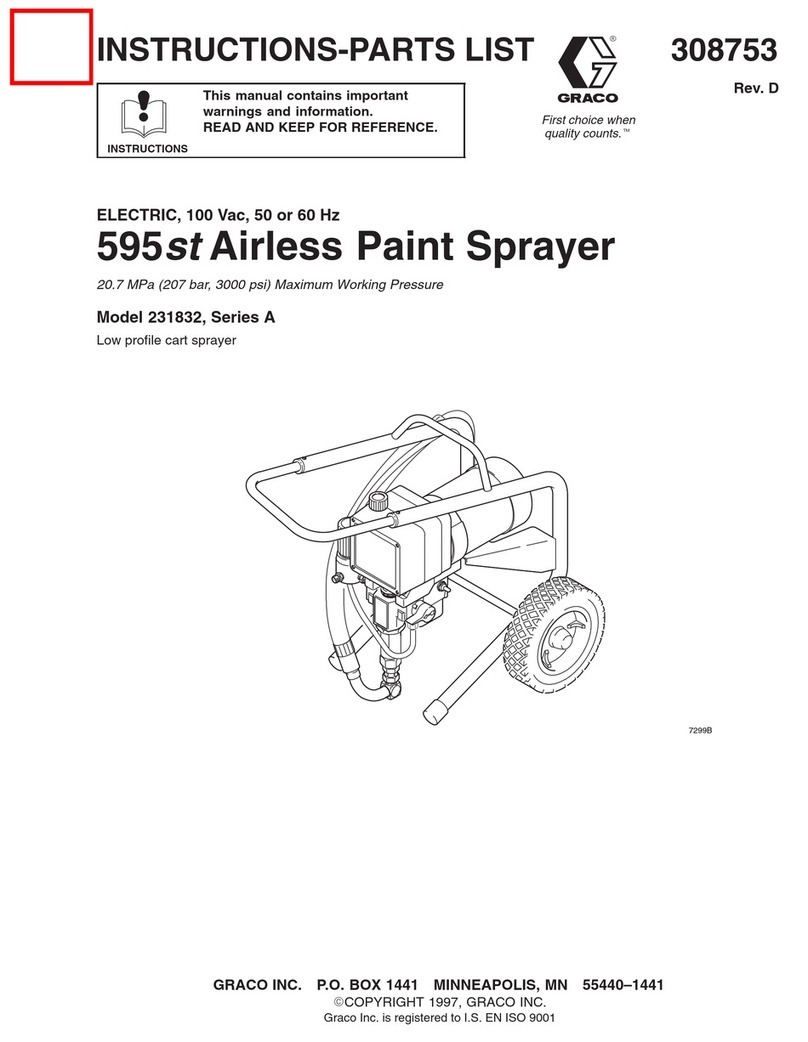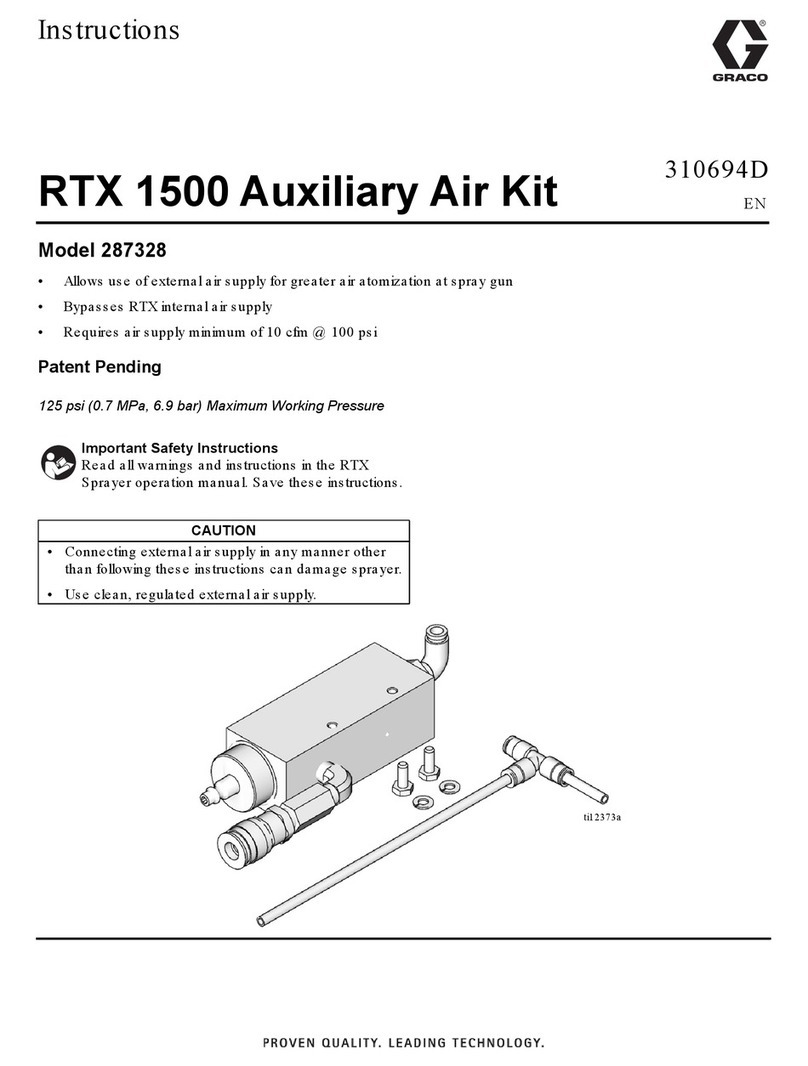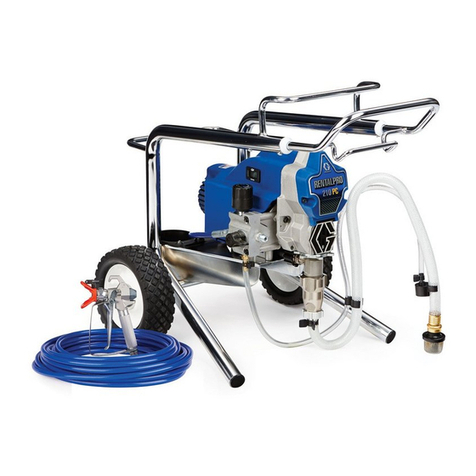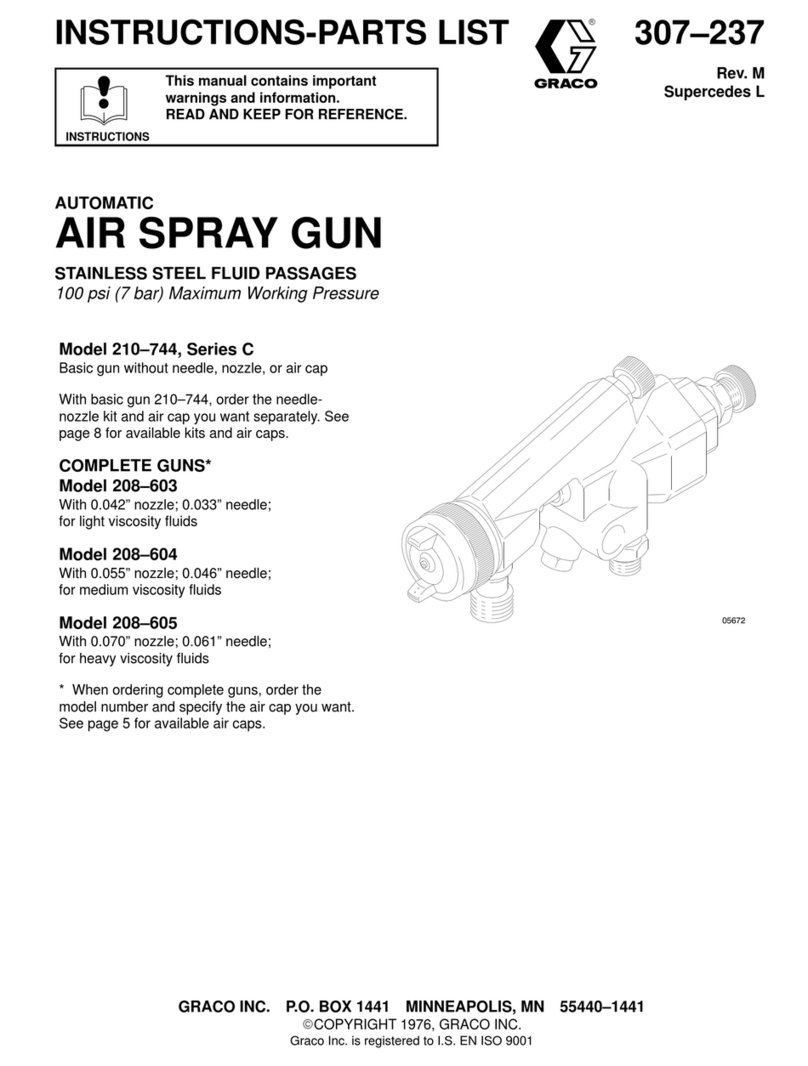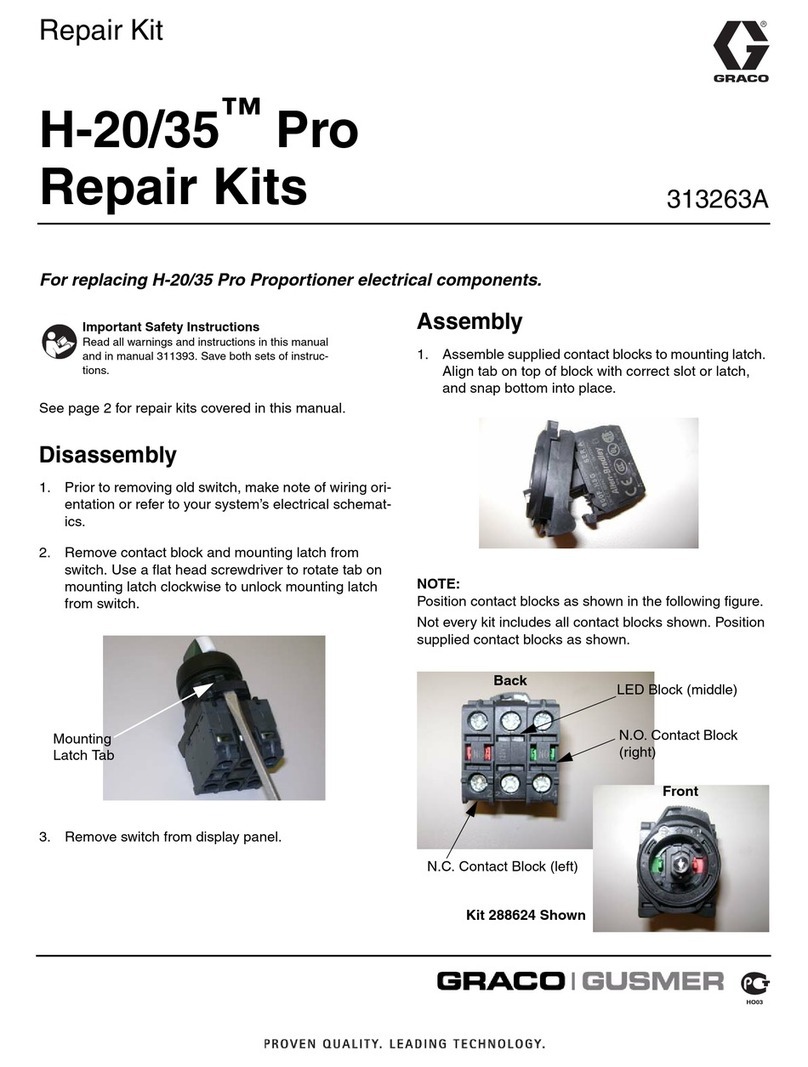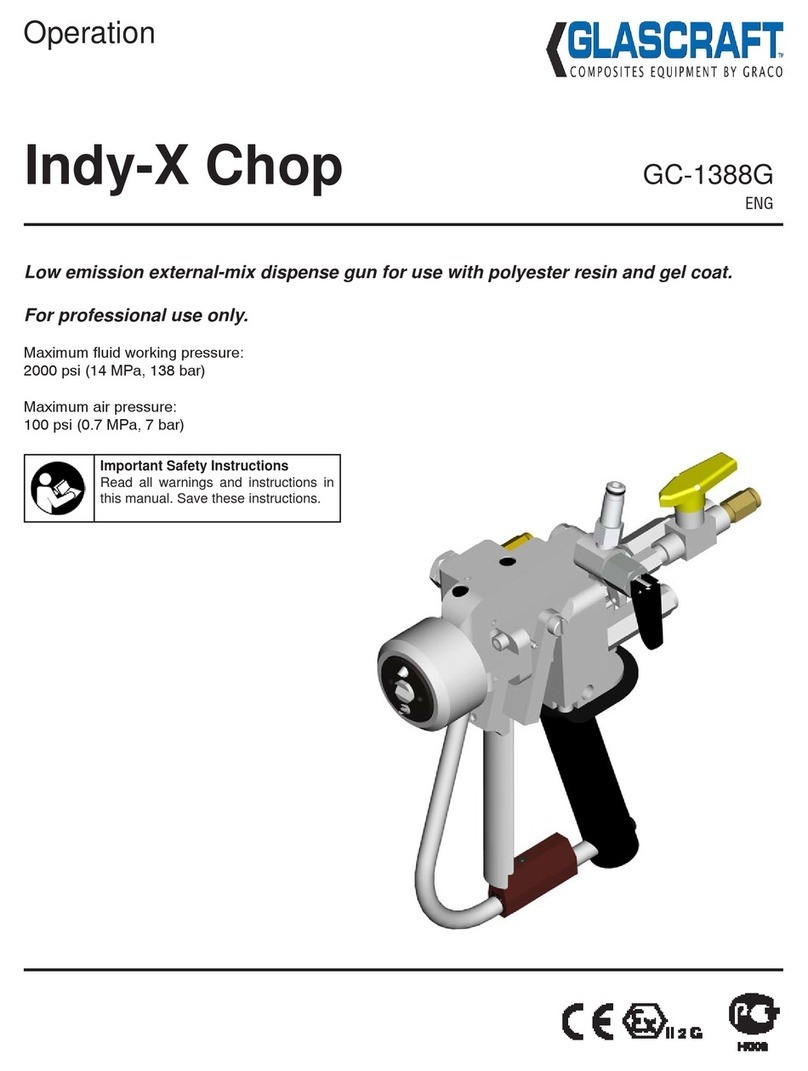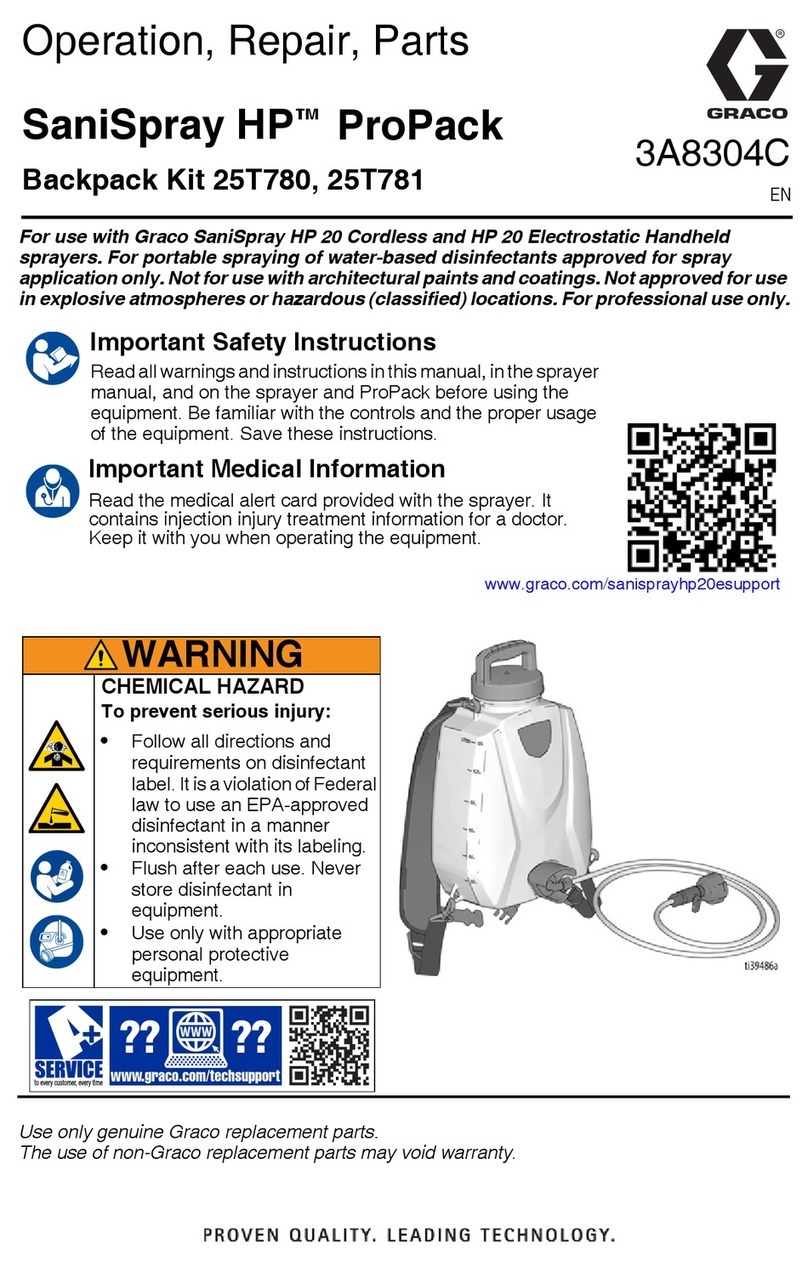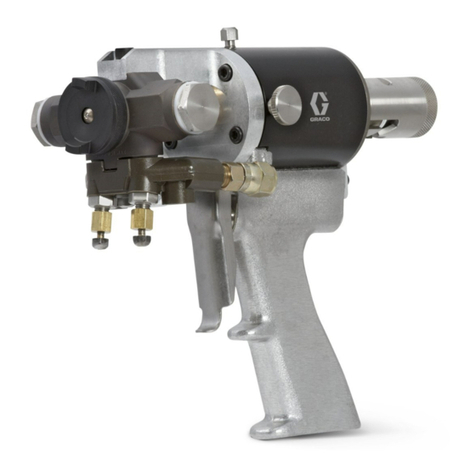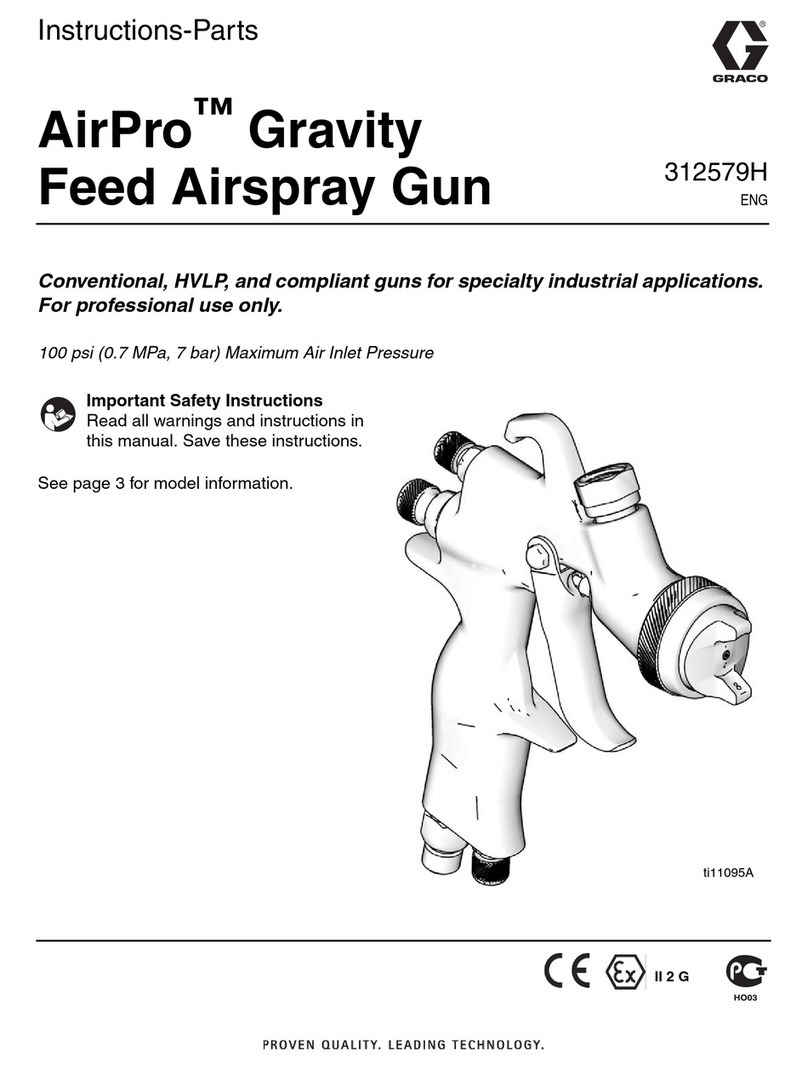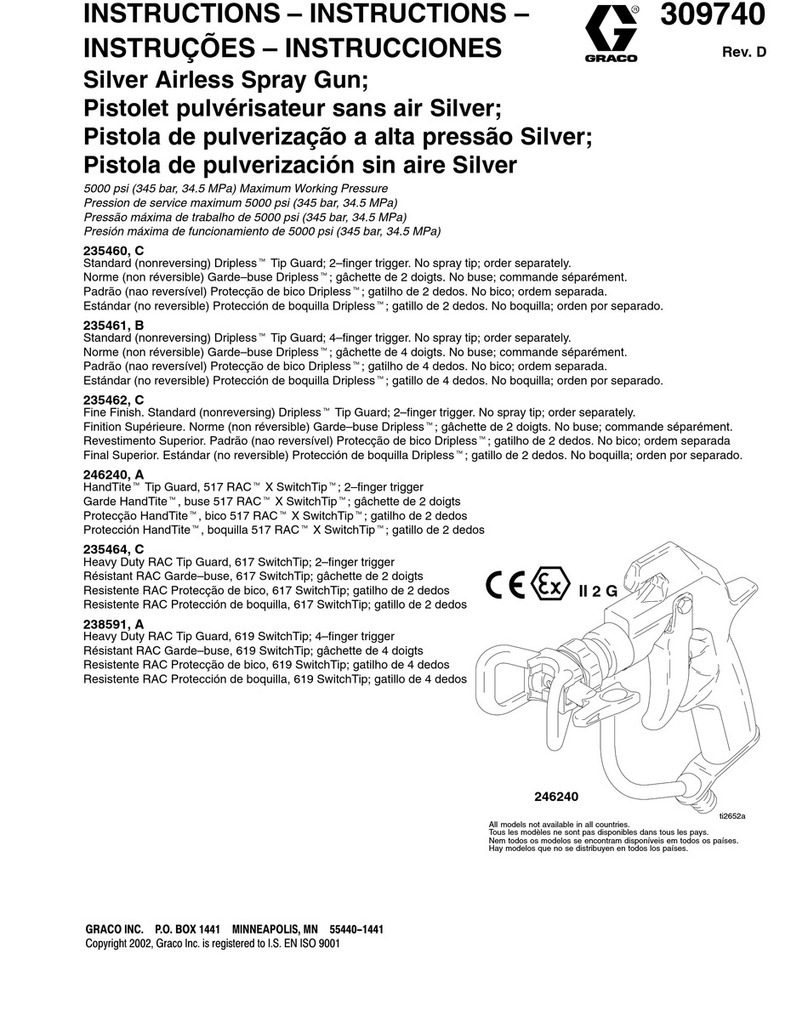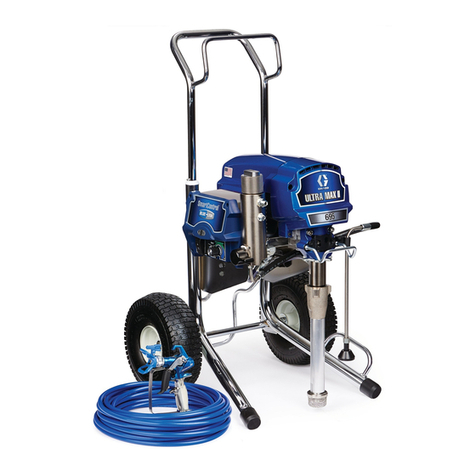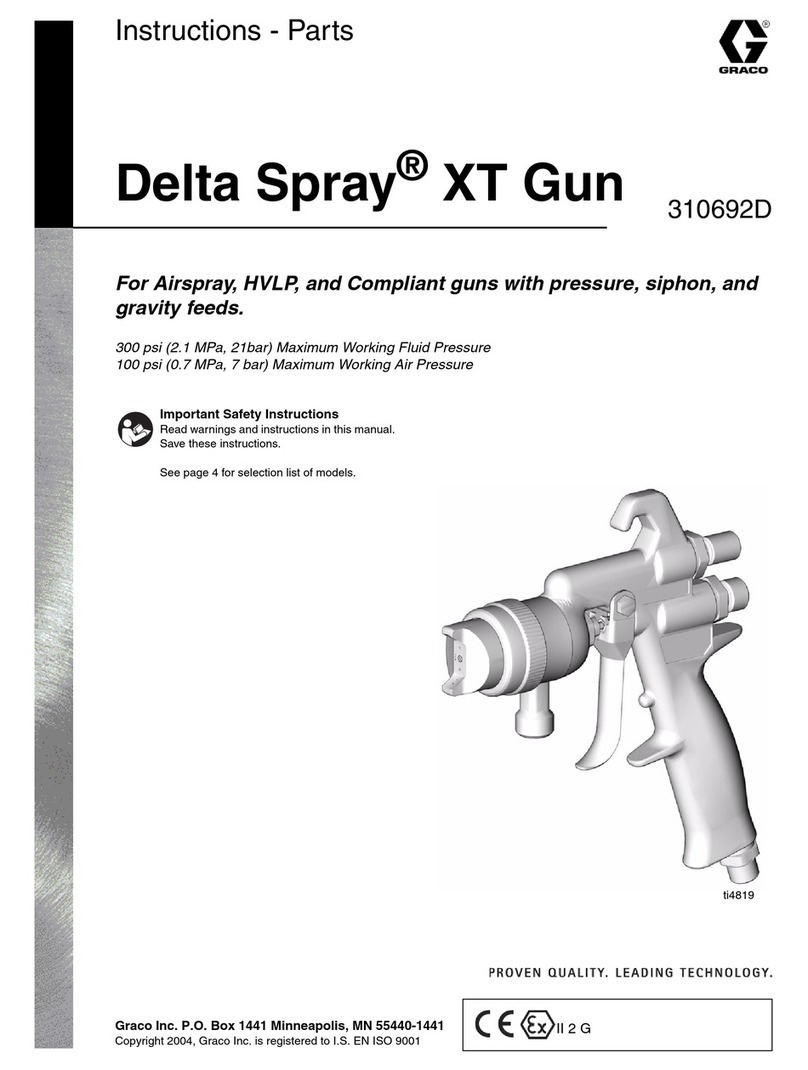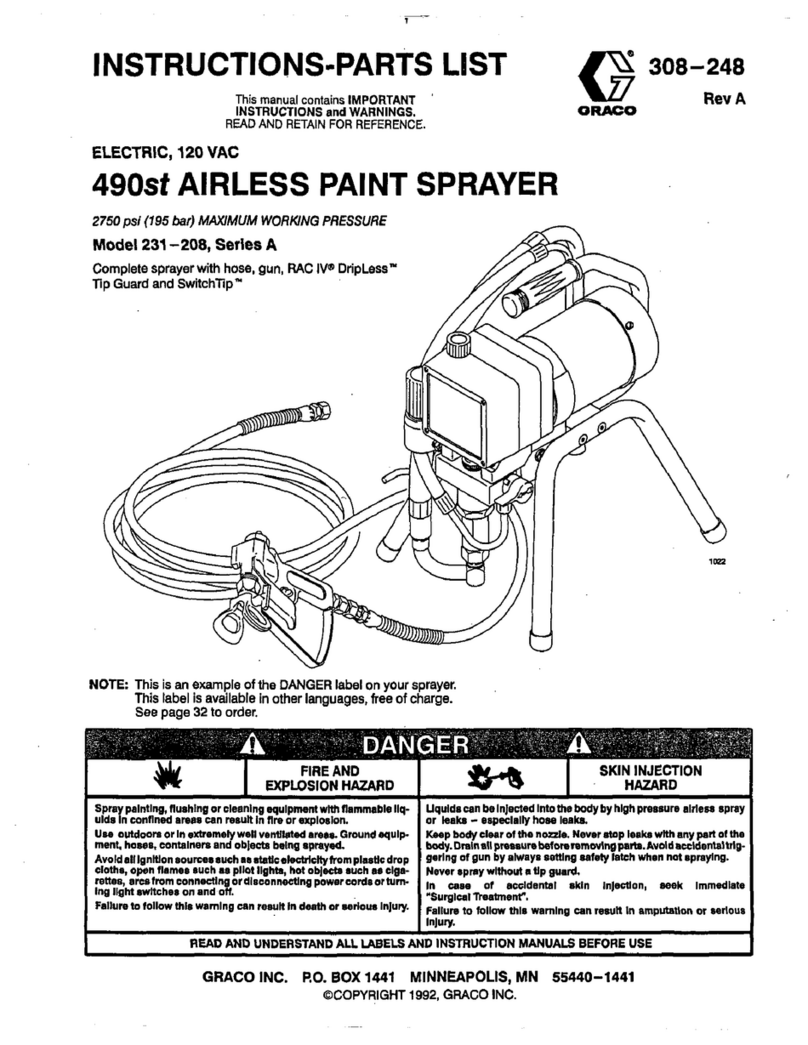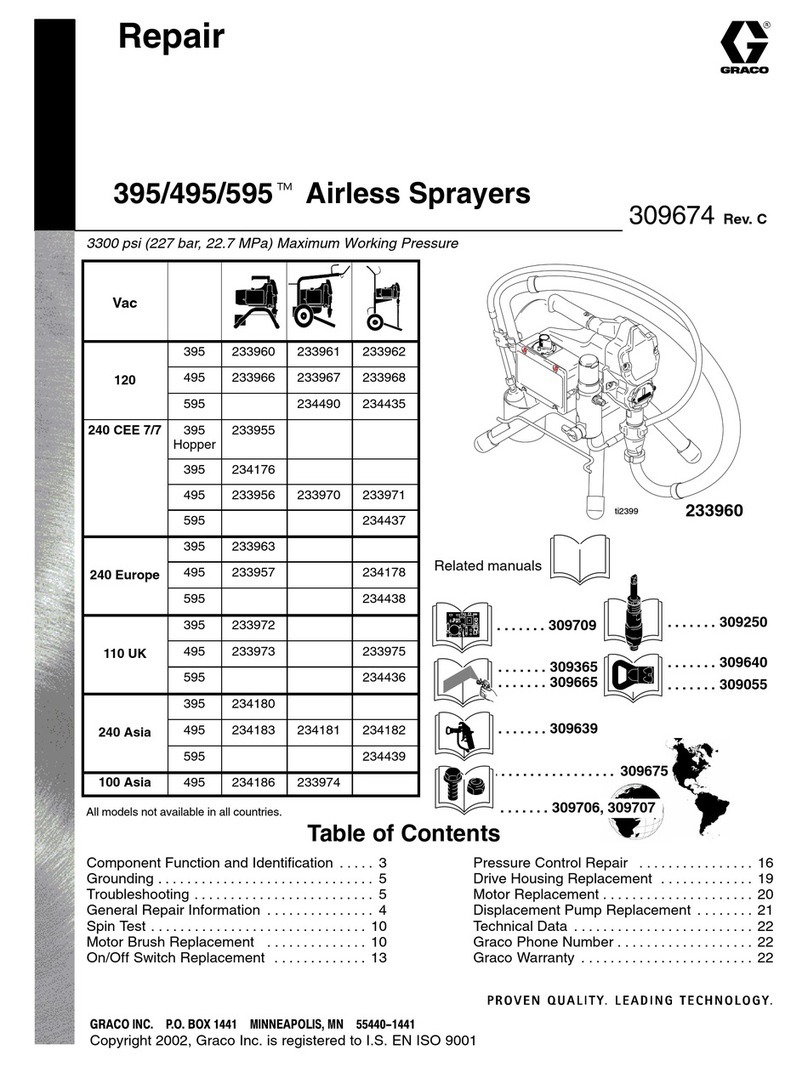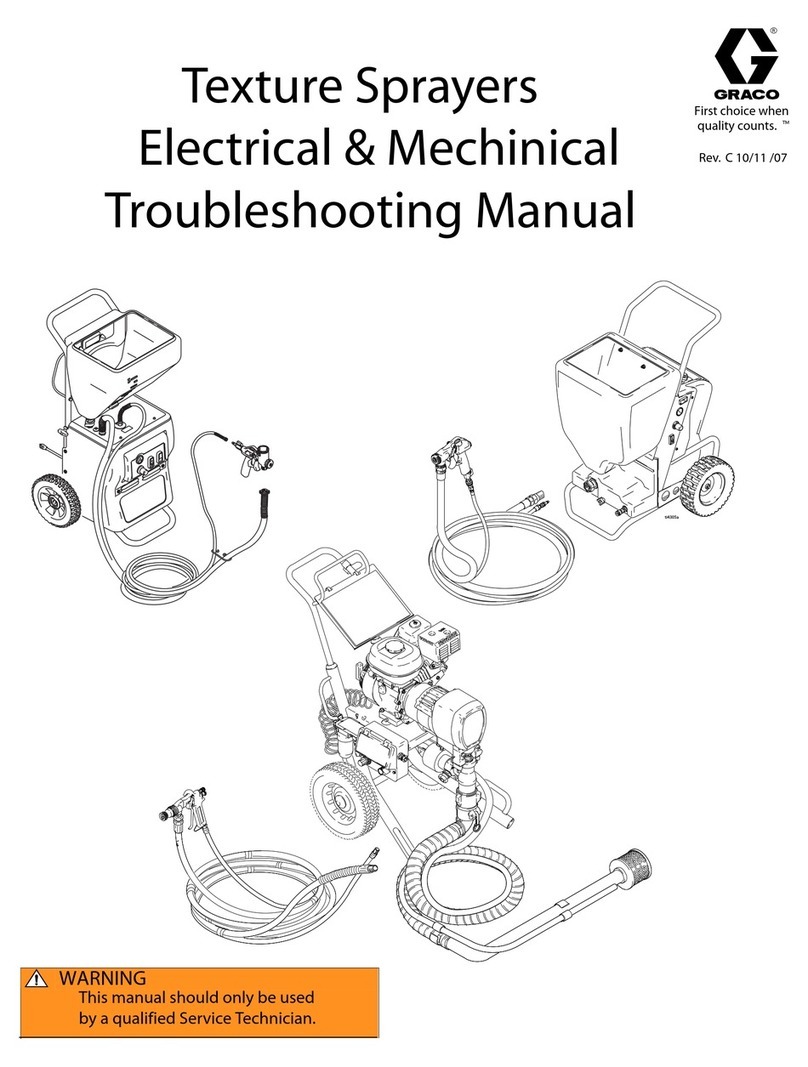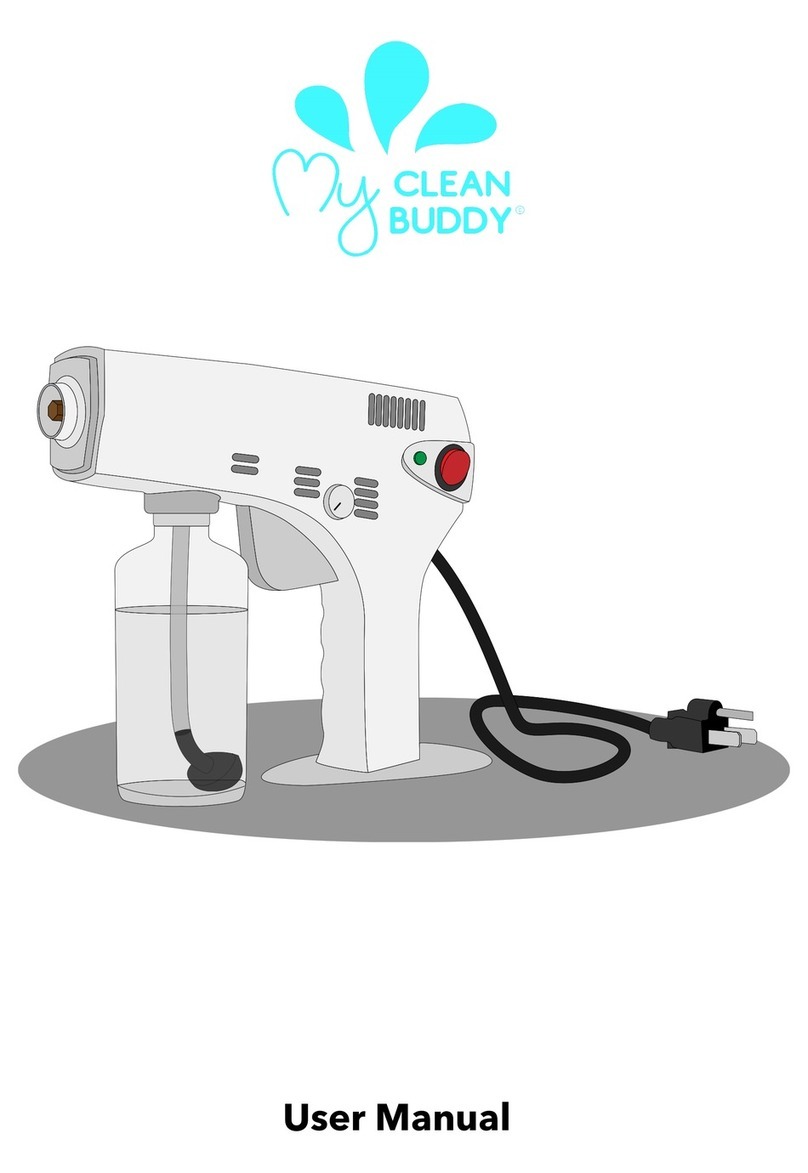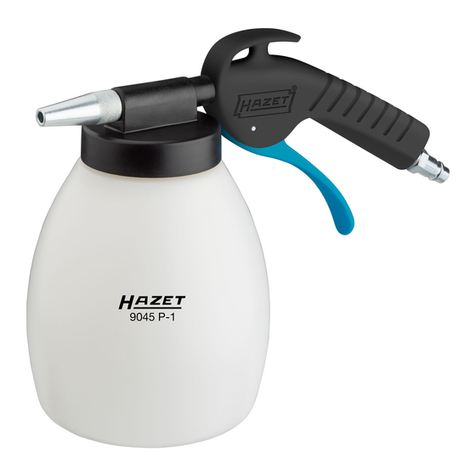
307-7065
EQUIPMENT MISUSE HAZARD
General
Safety
Any
misuse of the spray equipment or accessories, such as overpres
-
surizing,
modifying parts,
using incompatible chemicals and fluids, or us
-
ing
worn or damaged parts, can cause them to rupture and result in fluid
injection,
electrostatic shock, fire, explosion or property damage.
NEVER
alter or modify any part of this equipment; doing so
could cause it
to
malfunction.
CHECK
all spray equipment regularly and repair or replace worn or dam
-
aged
parts immediately
.
Read
and follow the fluid and solvent manufacturer
’
s literature regarding
the
use of protective clothing and equipment.
System
Pressure
This
gun has a maximum fluid working pressure of 66 bar (950 psi). Never
exceed
the maximum working pressure of the
gun or any other compo
-
nent
or accessory used in the system.
Fluid
Compatibility
BE
SURE all fluids and solvents used
are chemically compatible with the
“Wetted Parts” shown in the TECHNICAL DATA on page 29. Always
read
the fluid and solvent manufacturer
’
s literature before using the
fluid
or
solvent in this gun.
FIRE, EXPLOSION, or ELECTROSTA
TIC SHOCK HAZARD
To
reduce the risk of fire, explosion, or electrostatic shock, which may re
-
sult
from electrical discharge, it is essential that:
S
All parts of the electrostatic system are properly grounded.
S
All personnel in or close to the spray area are properly grounded.
SAll electrically conductive objects or devices in the spray area,
including paint containers, wash cans and tools, are properly
grounded.
When
operating the electrostatic device, any ungrounded objects in the
spray
area (such as people, containers, tools, etc.) can become
electri
-
cally
charged. Arcing may occur if these objects then come in contact or
close to ground. Arcing of sufficient energy levels can ignite the fluid
being
sprayed, fumes from solvents, dust particles, and other flammable
substances.
This can cause a fire or explosion and result in serious bod
-
ily
injury and property damage.
Static electricity can also be generated by the
flow of fluid through the
pump,
hose, gun, and nozzle, but it is dissipated through proper
ground
-
ing
as described in
Grounding
below
.
If
you
experience any arcing or feel even a slight shock,
ST
OP SPRA
Y-
ING
IMMEDIA
TELY
. Check for proper grounding of the entire system. Be
sure
you have corrected the problem before starting to spray again.
Grounding
The
following are
minimum
requirements for grounding a basic electro
-
static system. Your system may include other equipment or objects
which
must also be grounded. Always check your local electrical code for
detailed
grounding instructions. Be sure your system
is
connected to a
true
earth ground.
1.
Pump:
ground
by using a ground wire and clamp as described in your
separate
pump instruction manual.
2.
Air
compressors and hydraulic power supplies:
ground according to
the
manufacturer
’
s recommendations.
3.
Electrostatic
Spray Gun:
obtain grounding through connection to a
properly grounded air
supply hose. Use only the Graco Electrically
Conductive
Air
Supply Hose; see
ACCESSORIES
section to order
.
Connect
the air hose ground wire to a true earth ground.
4.
Object being sprayed:
keep the work piece hangers clean and
grounded
at all times. Contact points must be sharp points or knife
edges.
5.
All electrically conductive objects or devices
in the spray area,
including paint containers and wash cans, must be properly
grounded.
6.
All
persons entering the
spray area:
shoes must have conductive
soles,
such as leather
, or personal grounding straps must be worn.
Rubber
or plastic soles are not conductive. The operator must not
wear gloves which insulate the hand from spray gun. The gloves
must
be conductive or modified as shown on page
8.
7.
The floor of the spray area
must be electrically conductive and
grounded. Do not cover the floor with cardboard or any
non–conductive
material which would interrupt grounding
continuity
.
8.
Flammable liquids
in the spray area must be kept in approved,
grounded
containers. Do not store more than the quantity needed for
one
shift.
9.
All solvent pails:
use only grounded metal pails, which are
conductive. Do not place the pail on any non-conductive surface,
such as cardboard or paper, which would interrupt grounding
continuity.
10.
All
air and fluid lines
and electric cables
must be properly grounded.
Flushing and Cleaning Safety
To
reduce the risk of static sparking or splashing, always
follow the
Pres-
sure
Relief Procedure
on page 4 and remove
the spray tip before flush
-
ing.
Be
sure the ES valve lever is OFF before flushing or cleaning any
part
of the spray system.
Use
the lowest possible pressure to
flush. T
rigger the gun into a
grounded
metal
waste container
.
To
flush or purge equipment,
ALWAYS use solvents with a flash point
equal
to or greater than that of the fluid being sprayed.
To
clean the exterior of the equipment,
ALWA
YS use solvents with a flash
point
of higher than 38
_ C
(100
_
F).
ALWAYS remove all solvent from the system before reactivating the
spray
gun.
Use
only non-sparking tools to clean residue from the booth and
hangers.
Ventilate
the Spray Booth
To
prevent hazardous concentrations
of toxic and/or flammable vapors,
spray
only in a properly ventilated spray booth. NEVER operate the spray
gun
unless the ventilating fans are operating.
Check and follow all National, State and Local codes regarding air
exhaust
velocity requirements. Check and follow
all local safety and fire
codes
and OSHA standard 1910–107(b)(5)(i).
HOSE SAFETY
Highly
pressurized fluid contained in the hose can be very dangerous. If
the
hose develops leak, split or rupture, due to any kind of wear
, damage
or misuse, high pressure spray emitted from it can cause a fluid injection
injury
or other serious bodily injury or property damage.
TIGHTEN
all fluid connections securely before each use. High pressure
fluid can dislodge a loose coupling or allow high pressure spray to be
emitted
from the coupling.
NEVER
use a damaged hose. Before each use, check the entire hose
for
cuts, leaks,
abrasion,
bulging cover
, or damage or movement of the hose
couplings.
If any of
these conditions exist, replace the hose immediately
.
DO
NOT try to recouple high pressure hose or mend it with tape or any
other
device. A repaired hose cannot contain the high pressure fluid.
HANDLE
AND
ROUTE HOSES CAREFULL
Y
. Do not pull on hoses to
move
equipment. Do not use fluids or solvents which are not compatible
with
the inner tube and cover of the hose.
IMPORTANT
United States Government safety standards have been adopted under the Occupational
Safety and Health Act. These standards––particularly the
General Standards, Part 1910.107 and any other appropriate regulations––should be consulted in connection with the installation, operation, and
maintenance of electrostatic spray painting equipment.

